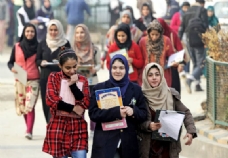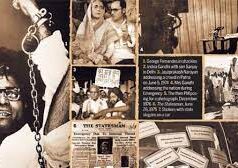
Apart from the preventive and legal action taken by the security forces, demonetisation has led to sudden lack of cash flow in the Valley contributing immensely towards the reduction in terrorism
When a lamp is about to extinguish, it begins to flicker. Similar is the case with terrorism in Kashmir. The militancy is on decline. Hurriyat leadership has been badly exposed. The traditional Kashmiri power brokers are frustrated and dejected. Terror funding has been squeezed. The terrorists are on the run with top leadership of most of the tanzeems killed. The local youth that had been misled and baptised into terrorism is returning home with increased number of parents appealing to their sons to return. The fact is that youth today is shunning violence and conflict with a view to look for a peaceful and brighter future and rub shoulders with their contemporaries across the Ravi. The narrative in Kashmir is fast changing from that of conflict to peace. Pakistan’s desperate effort to keep the pot boiling is meeting with stiff resistance from the local Kashmiris and the valiant security forces of our nation. All these are indicators of brighter days ahead and emergence of light at the end of the tunnel.
Terrorist on Run
The relentless pressure put on the terrorists by the Indian Army and other security forces including Jammu & Kashmir (J&K) Police has resulted in killing of more than 200 terrorists so far this year with 60 per cent being foreign terrorists out of which almost 90 per cent were self-styled commanders. This is the highest number for the last seven years.
Stone-pelting incidents have come down by over 60 per cent this year, a change that the Director General of J&K Police SP Vaid attributes to a range of factors, from a decrease in militancy to counselling and awareness programmes for the Valley youth. Unlike last year, incidents of stone-pelting in 2017 have been largely restricted to the encounters between the forces and the militants, as local youth tried to rescue militants from security cordons.
Youth Rejects Negativity
Following the dictum ‘Diamond cuts diamond’, the J&K Police made effective use of social media to counsel the youth thus successfully changing the discourse on social media and curbing jihadi and Pakistani propaganda to incite the youth. The majority youth has changed the narrative in Kashmir. They too want azadi but not from India. They want azadi from the politics of deceit practised by the power broker politicians, azadi from those leaders whose loyalty to the people and the nation depends on whether they are in power or out of it. They also seek azadi from media that specialises in negative reporting, from corruption, poverty, lack of governance, from having to prove their patriotism each day. Their aspirations are similar to the youth of any other State in India.
Despite being children of the conflict era, they are convinced of the dividend peace can deliver and are unwilling to be misused and misled by the self-centric Hurriyat leadership. The Army’s Kashmir Super – 40 initiative for coaching the J&K youth for Engineering Entrance Exam (IIT-JEE) broke all previous records when nine students of its 2016-17 batch cracked the highly competitive and prestigious IIT-JEE advance. The success achieved this year was overwhelming at a rate of 40 per cent when nine out of batch of 36 (31 Boys and 5 Girls) qualified, surpassing the best of the IIT coaching centres in the country. 28 students, including two girls, had previously qualified in IIT-JEE Mains, the first step of selection process, in April 2017.
In 2016, 6,500 Kashmiri students appeared in the UPSC prelims and there is a rising trend in the number of youth applying for the KAS. Nineteen individuals from J&K made to the merit list of Civil Services. In 2017, 14 qualified from J&K with seven from Kashmir. Around 1,18,000 candidates applied for the posts of 5,362 constables and some 70,000 applied for the posts of 680 sub-inspectors.
Special Scholarship
More than 1,500 Kashmiri boys and girls benefit from Prime Minister’s Special Scholarship Scheme for J&K enjoying fully subsidised graduation courses in general and professional streams in the prestigious institutions across the country. The Government has launched innovative schemes like ‘Khelo India’ & ‘Sports for All’ to streamline youth energy in the right direction. It is also planning to start a Football Academy in Srinagar. Revival of Sufi Music, holding of music festivals, promotion of local culture and folk art are the other initiatives launched for positive engagement of the youth. Government on its part is trying best to tell a different story of J&K but the vision of a section of local media is jaundiced and they cannot see beyond conflict.
According to sources the number of remaining terrorists in Valley is approximately 200 out of which more than 50 per cent are local youth mainly without weapons, ammunition and cash.Provocations from the mosques still continues but is on decline due to strict action by security forces. A dedicated effort to de-radicalise the youth is needed though a beginning has been made by creating a separate Department under the Ministry of Home Affairs. The State Government needs to multiply its focus and effort on this vital aspect.
Doing Punjab in J&K
There has been an increase in civilian killings in militancy-related violence with 54 civilians getting killed this year compared to 4 last year. These included high profile killings of Lt Umar Fayaz, Dy SP Ayub Pandith, Inspector Dar, political leaders and Amar Nath devotees. But to my mind this is the biggest strategic mistake made by the terrorist leadership. A parallel can be drawn to Punjab militancy where similar violence against the local policemen and their families turned the tide and militancy was crushed. Similarly, “there is fight of survival between local police and local people on the one hand and the terrorists on the other in Kashmir Valley,” according to Col Vivek Chadha. Human intelligence which was the major handicap facing the security forces in Kashmir is now available in plenty particularly from the women folk which had been the victim of the lust of the terrorists.
Another ominous sign is that the remnant disillusioned and misguided youth has taken to social media in a big way opening channels to express their feelings of anger and disenchantment. They want to fight its war through social media instead of insurgency and guerrilla warfare. The declining militancy will transform into a social media warfare.
The sterling effort of National Investigation Agency (NIA) in exposing the terror funding network and involvement of the Hurriyat leaders therein has also contributed immensely towards declining militancy. The Hurriyat has been exposed so badly that its leadership has lost credibility and hold over the youth. Decline in militancy does not necessarily mean decline in Pakistan’s efforts at keeping the pot boiling. Pakistan will continue to push terrorists across the Line of Control. The majority Kashmiris have understood Pakistan’s intent and design.
No More a Flashpoint
Pakistan’s involvement in Kashmir in fact has done more harm than good to the Kashmiris. The world no more sees Kashmir as a domestic struggle or an internal conflict but a border dispute between India and Pakistan. The international sympathy for the Kashmiris is on wane and Kashmir no longer is viewed as a flashpoint. The Hizbul Mujahideen (HM) is split and fading. The leadership of Lashkar and Jaish has been wiped out. The remaining terrorists are untrained and demotivated as well as rudderless. The local support is also waning.
The solid foundation laid by the security forces and emerging ray of hope has led the Central Government to initiate the process of sustained dialogue with a view to find a long lasting solution to the existing imbroglio. For this to succeed, the existing monolith canvas of Valley will have to be restored to its pristine glory of a multi-faith, multi-ethnic and multi- linguistic society. It is unachievable without the return of Kashmiri Hindus and other minorities.
If New Delhi fails to seize the opportunity provided by disenchantment of local population towards violence and succumbs to the pressure of releasing political prisoners as a Confidence Building Measure, it would be committing hara-kiri. The golden opportunity would be lost and a new kind of violence, more deadly and foreign cannot be ruled out.
By Brig (Retd) Anil Gupta
(The writer is a Jammu-based security and strategic analyst)
Courtesy: Organiser














